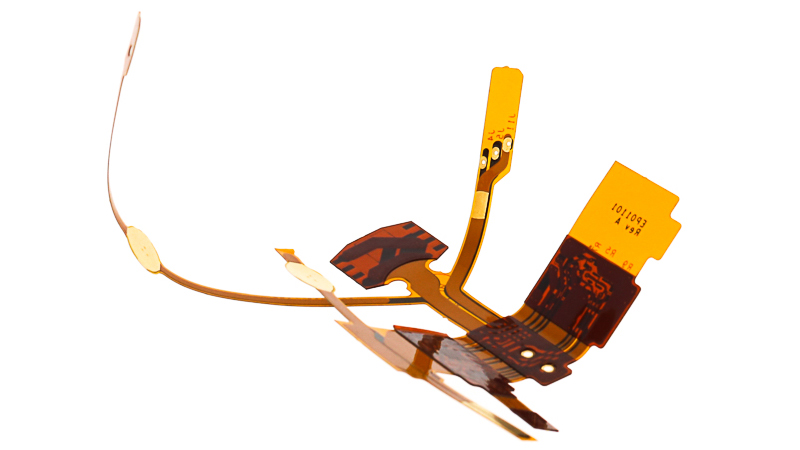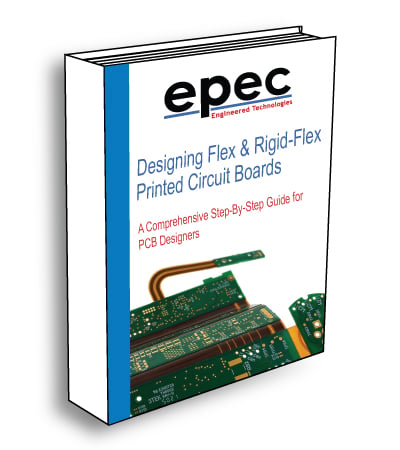Flex and Rigid-Flex PCBs for Portable Devices
When manufacturing portable devices, the focus is on the printed circuit boards that control the electronics and battery. Flex and rigid-flex PCBs address design issues for creating slim, small, and lightweight portable devices.
Portable devices are essential in many industries, not just everyday electronics like smartphones, tablets, laptops, and smartwatches. Industries such as medical, military, food service, warehousing, construction, and retail also rely on portable devices. From medical devices used during surgeries to military radar devices, these electronics require high speeds, reliability, and complex controls. Experienced engineers and production workers with over 25 years of experience with flex and rigid-flex PCBs can provide the right PCBs for specific portable devices.
Flexible Circuits for Portable Devices
Flexible and rigid-flex PCBs are ideal for designing electronics with space and weight limitations. All components must fit and function properly without causing friction or tangling wires. Flexible circuits solve this problem by having fewer connections and parts. Copper traces are etched into flexible polyimide, PTFE, or FR-4 materials, allowing the circuit board to flex and bend around components. This eliminates the need for extra space, resulting in a highly functional device.

Polyimide materials are also small and light, adding no extra weight to the device. This allows for more functionality in the portable device based on specifications.
Design and Manufacturing Challenges
Portable devices face unique design and manufacturing challenges. Customers may need a circuit board that offers flexibility and withstands shocks and temperature changes. While flexible PCBs provide flexibility, they may not handle shocks and temperature changes well.
Epec understands these challenges and uses its extensive catalog and experience to guide clients. We often recommend rigid-flex PCBs for portable devices experiencing shocks and temperature changes. Rigid-flex boards combine the bendability needed to fit into the device with the stability to handle shocks and prevent cracking. Materials like PTFE and FR-4 handle temperature fluctuations.
Both flex and rigid-flex PCBs can be multilayered for increased functionality. At Epec, we invest in manufacturing tools and equipment to meet tolerance specifications:
- X-Ray Drilling
- Laser Drilling & Routing
- Laser Direct Imaging
- Plasma Etching
- Autoclave Lamination
- CNC/Optical Machining
Using the proper equipment allows us to create tighter tolerances, greater control of drill depth, higher yield, and optimal lamination for all our PCBs. Based on requirements and budget, we use the machines that offer the highest success rates and consistent repeatability.
Applications for Flex and Rigid-Flex PCBs
Flexible and rigid-flex PCBs benefit a wide range of portable device applications beyond commercial electronics like smartphones, cameras, and tablets. They are also used in the medical, aerospace, and military industries.
Applications include:
- Wireless controllers
- Pacemakers
- Cochlear implants
- GPS devices
- Handheld radar equipment
- Barcode scanners
- Special Certification Considerations
Portable devices may require certifications to comply with local, state, federal, and international regulations. Many electronic devices in Europe, China, and the United States must adhere to the Restriction of Hazardous Substances (RoHS) legislation, except for medical devices and monitoring equipment. The medical and military industries also require adherence to industry regulations to ensure quality control.
At Epec, our design and manufacturing facilities and personnel are J-STD-001, ISO 9001, and IPCV Class III certified to provide superior capabilities for every portable device project.
Customized Flex and Rigid-Flex PCB Solutions
Discover the power of precision engineering for your portable devices. Consult Epec for customized flex and rigid-flex pcb solutions today.
Request a Quote Request Design Support Request More Information



